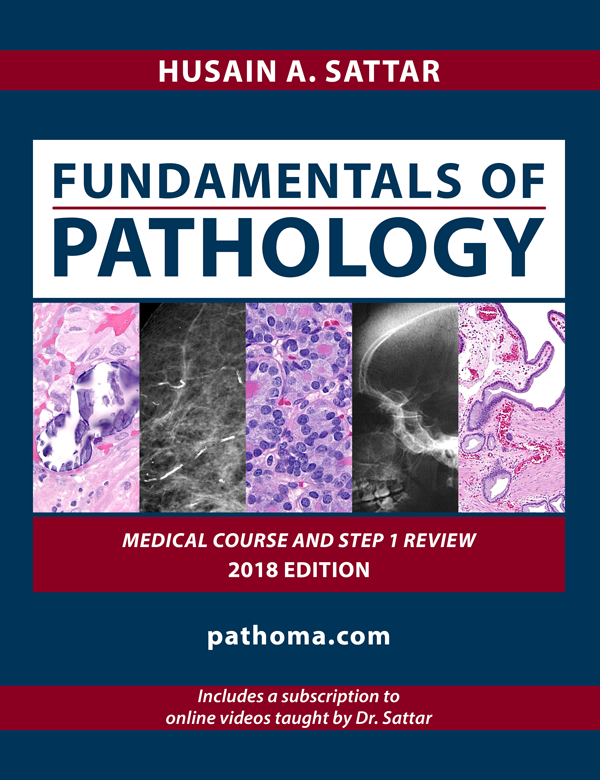
ANTERIOR CRUCIATE LIGAMENT RECONSTRUCTION Knee Clinic knee isokinetic closed kinetic chain exercises (p .047). However, there was no statistical difference in VMO/VL ratio between subjects with and without PFPS during closed kinetic chain exercises (p .623). Maximum VMO/VL ratio was obtained at 60° knee flexion in closed kinetic chain exercise. Conclusion: In closed kinetic chain exercises, more selec-tive VMO activation can be obtained at 60
the therapist’s responsibility to con
(PDF) Open versus closed kinetic chain exercises for. Abstract. Knee extensor resistance training using open kinetic chain (OKC) exercise for patients recovering from anterior cruciate ligament reconstruction (ACLR) surgery has lost favour mainly because of research indicating that OKC exercise causes greater ACL strain than closed kinetic chain (CKC) exercise., Continue to progress with full extension exercises, and progress to closed kinetic chain exercise s (always exercising with full weight through the leg) . Flexion exercises: wall and heel slides..
Closed-chain exercises and hamstring stretching have shown to decrease compressive forces on the anterior aspect of the knee. This case report will look at using these exercises in the conservative management of MPS. Case Description: The patient is a 13-year-old female who sustained a direct blow to the anteriomedial aspect of her left knee. After a diagnosis of Chondromalacia Patella, she stabilizers of the knee and as a means of restoring stability to the joint, exercises in open kinetic chain (OKC) and closed kinetic chain (CKC) has been used in rehabilitation programs disorders. Conclusion: The benefits for patellofemoral implementing these protocols are not well documented; scientific evidences are insuffici ent to prove the real effectiveness of these exercises in
Closed chain exercises are safer for your joints—especially the knee joint, which is very vulnerable to stress and injury. The force involved in closed chain exercises like lunges and squats is compressive , meaning it actually stabilizes the joint and helps strengthen it. PATELLOFEMORAL JOINT REHABILITATION COMPONENTS GREG BENNETT, P.T., DSc. Excel Physical Therapy Marymount University Anatomy of the patella: Patella is triangular, apex directed downwards Anterior surface gently convex Deep surface partially articulating and changes throughout the ROM of the knee. Joint surfaces are not congruent. Upper 3/4th articulates Functions: Patella …
PATELLOFEMORAL JOINT REHABILITATION COMPONENTS GREG BENNETT, P.T., DSc. Excel Physical Therapy Marymount University Anatomy of the patella: Patella is triangular, apex directed downwards Anterior surface gently convex Deep surface partially articulating and changes throughout the ROM of the knee. Joint surfaces are not congruent. Upper 3/4th articulates Functions: Patella … Closed chain exercises are safer for your joints—especially the knee joint, which is very vulnerable to stress and injury. The force involved in closed chain exercises like lunges and squats is compressive , meaning it actually stabilizes the joint and helps strengthen it.
Figure 2.€ The hypothesis is that OKC and CKC exercises for the early rehabilitation of the ACL-reconstructed knee do not differ in their effects on graft healing, postoperative knee … Irish, SE, Millward, AJ, Wride, J, Haas, BM, and Shum, GLK. The effect of closed-kinetic chain exercises and open-kinetic chain exercise on the muscle …
Percentage of Maximal Voluntary Isometric Contraction of the Gluteus Maximus during Closed Kinetic Chain Exercise. Lateral Step-up (10% BM) 23.0% 23.0% Lunge with forward trunk lean 22.0% 22.0% Pelvic Drop 25.1% 17.0% 21.1% Lateral Step-up (25% BM) 20.0% 20.0% Lunge with backward trunk lean 19.0% 19.0% Hip Hike 17.7% 17.7% Lateral Side-step (Band at knee) 16.2% 16.2% … Continue to progress with full extension exercises, and progress to closed kinetic chain exercise s (always exercising with full weight through the leg) . Flexion exercises: wall and heel slides.
Non-Operative Treatment - Chondromalacia Patella Rationale: The number of patellofemoral problems is increasing. No single cure exists for the treatment of this problem. This suggested exercise program is divided into three goal-oriented phases. Paying attention to the precautions and good education is paramount to success. Phase 1-Acute phase Goals: Education Decrease pain, swelling, palpable Continue to progress with full extension exercises, and progress to closed kinetic chain exercise s (always exercising with full weight through the leg) . Flexion exercises: wall and heel slides.
Percentage of Maximal Voluntary Isometric Contraction of the Gluteus Maximus during Closed Kinetic Chain Exercise. Lateral Step-up (10% BM) 23.0% 23.0% Lunge with forward trunk lean 22.0% 22.0% Pelvic Drop 25.1% 17.0% 21.1% Lateral Step-up (25% BM) 20.0% 20.0% Lunge with backward trunk lean 19.0% 19.0% Hip Hike 17.7% 17.7% Lateral Side-step (Band at knee) 16.2% 16.2% … • If the patient is having difficulty with equal use of extremities or tolerance to closed chain exercises, then the AlterG Anti-Gravity Treadmill® is a useful tool
Closed kinetic chain exercises or closed chain exercises (CKC) are physical exercises performed where the hand (for arm movement) or foot (for leg movement) is fixed in space and cannot move. The extremity remains in constant contact with the immobile surface, usually the … Possibly the most intriguing of these principles is the use of the kinetic chain concept in exercise prescription following ACL reconstruction. The hip, knee, and ankle joints when taken together, comprise the lower extremity kinetic chain.
Poor VMO, too rapid progression of closed chain exercise, over zealous daily activity, abnormal gait (flexed knee at heel strike), too early return or too sudden progression of running loads may overload the patellofemoral joint and/or patella tendon and cause C. Mikkelsen, S. Werner, and E. Eriksson, “Closed kinetic chain alone compared to combined open and closed kinetic chain exercises for quadriceps strengthening after anterior cruciate ligament reconstruction with respect to return to sports: A prospective matched follow-up study,” Knee Surgery, Sports Traumatology, Arthroscopy, vol. 8, no. 6, pp. 337–342, 2000.
Non-Operative Treatment - Chondromalacia Patella Rationale: The number of patellofemoral problems is increasing. No single cure exists for the treatment of this problem. This suggested exercise program is divided into three goal-oriented phases. Paying attention to the precautions and good education is paramount to success. Phase 1-Acute phase Goals: Education Decrease pain, swelling, palpable Non-Operative Treatment - Chondromalacia Patella Rationale: The number of patellofemoral problems is increasing. No single cure exists for the treatment of this problem. This suggested exercise program is divided into three goal-oriented phases. Paying attention to the precautions and good education is paramount to success. Phase 1-Acute phase Goals: Education Decrease pain, swelling, palpable
Effects of open versus closed kinetic chain SpringerLink
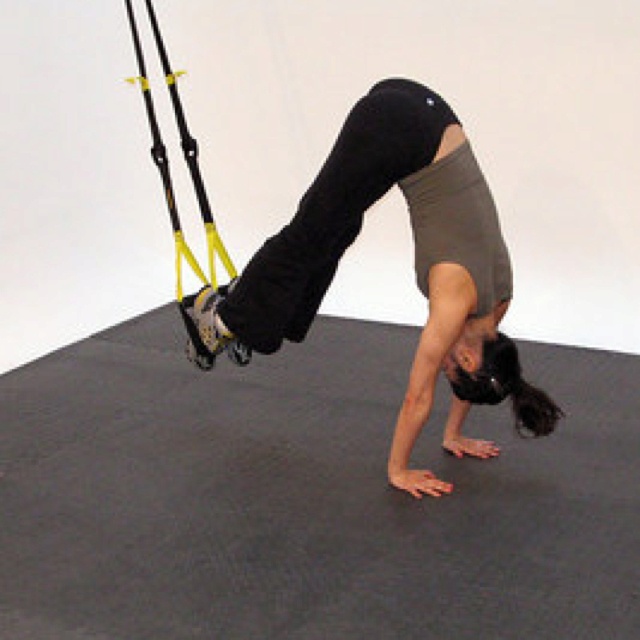
Exercise for stronger knees and hips Harvard Health. Non-Operative Treatment - Chondromalacia Patella Rationale: The number of patellofemoral problems is increasing. No single cure exists for the treatment of this problem. This suggested exercise program is divided into three goal-oriented phases. Paying attention to the precautions and good education is paramount to success. Phase 1-Acute phase Goals: Education Decrease pain, swelling, palpable, Closed chain exercises (i.e., the foot is in contact with a surface such as the ground or a metal plate on exercise equipment) are more functional (i.e., simulating "real" activities), and place less stress on the joint structures than open chain exercises..
Non-Operative Treatment Chondromalacia Patella. terminal knee extension (TKE); step ups; step backs; squats; other closed chain exercises-make sure knee flexion does not exceed 60° • Heel slides/ wall slides actively • Gait drills • Balance drills with brace • Hip and core strengthening • Stretching for patient specific muscle imbalances Cardiovascular Exercise • Upper body circuit training or UBE Progression Criteria, Closed-chain exercises and hamstring stretching have shown to decrease compressive forces on the anterior aspect of the knee. This case report will look at using these exercises in the conservative management of MPS. Case Description: The patient is a 13-year-old female who sustained a direct blow to the anteriomedial aspect of her left knee. After a diagnosis of Chondromalacia Patella, she.
The Effect of Closed-Kinetic Chain Exercises and... The
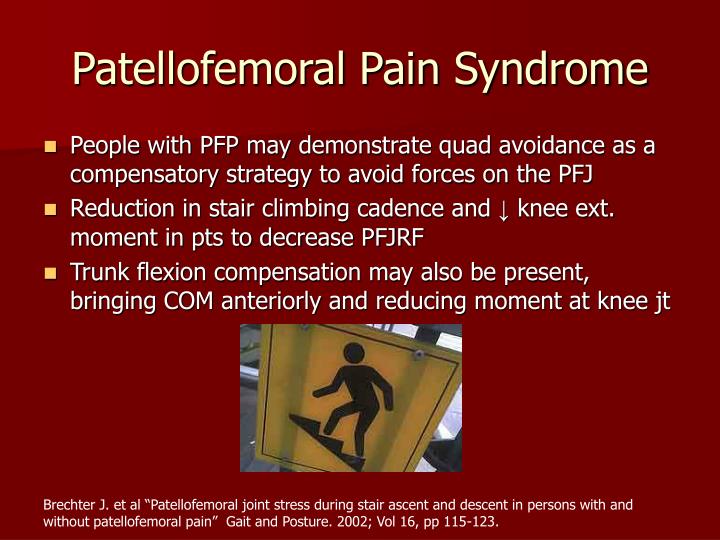
A Comparison of Closed Kinetic Chain and Isokinetic joint. Percentage of Maximal Voluntary Isometric Contraction of the Gluteus Maximus during Closed Kinetic Chain Exercise. Lateral Step-up (10% BM) 23.0% 23.0% Lunge with forward trunk lean 22.0% 22.0% Pelvic Drop 25.1% 17.0% 21.1% Lateral Step-up (25% BM) 20.0% 20.0% Lunge with backward trunk lean 19.0% 19.0% Hip Hike 17.7% 17.7% Lateral Side-step (Band at knee) 16.2% 16.2% … Closed chain exercises are safer for your joints—especially the knee joint, which is very vulnerable to stress and injury. The force involved in closed chain exercises like lunges and squats is compressive , meaning it actually stabilizes the joint and helps strengthen it..

Open vs. Closed Chain Exercise for Tibiofemoral Joint Osteoarthritis Walter L. Jenkins, DHS, PT, ATC-L Associate Professor Department of Physical Therapy East Carolina University APTA Combined Sections Meeting New Orleans, LA Orthopaedic Section; Knee Education Group Symposium February 26, 2005 I. Introduction II. Articular Cartilage a. Mechanism of Injury b. Tibiofemoral Joint … stabilizers of the knee and as a means of restoring stability to the joint, exercises in open kinetic chain (OKC) and closed kinetic chain (CKC) has been used in rehabilitation programs disorders. Conclusion: The benefits for patellofemoral implementing these protocols are not well documented; scientific evidences are insuffici ent to prove the real effectiveness of these exercises in
Abstract. Subject: Conservative treatment of patellar chondromalacia has been the subject of several studies. One recommended treatment is a strengthening exercise of the quadriceps muscle, which may be performed in closed or open kinetic chains. Isokinetic Closed Kinetic Chain Strength Testing and Exercising of the Knee Kenji Kawamura kibi International University, Takahashi, Japan kawamura@kiui.ac.jp Introduction: Closed kinetic chain(CKC) exercise has become popular for use after anterior cruciate ligament (ACL) reconstructive surgery because many clini- cians believe that CKC exercises are safer and more functional than …
Abstract. Knee extensor resistance training using open kinetic chain (OKC) exercise for patients recovering from anterior cruciate ligament reconstruction (ACLR) surgery has lost favour mainly because of research indicating that OKC exercise causes greater ACL strain than closed kinetic chain (CKC) exercise. Closed chain exercises are safer for your joints—especially the knee joint, which is very vulnerable to stress and injury. The force involved in closed chain exercises like lunges and squats is compressive , meaning it actually stabilizes the joint and helps strengthen it.
Possibly the most intriguing of these principles is the use of the kinetic chain concept in exercise prescription following ACL reconstruction. The hip, knee, and ankle joints when taken together, comprise the lower extremity kinetic chain. Closed chain exercises are safer for your joints—especially the knee joint, which is very vulnerable to stress and injury. The force involved in closed chain exercises like lunges and squats is compressive , meaning it actually stabilizes the joint and helps strengthen it.
Physical therapists have emphasized the distinction between open-chain and closed-chain exercises. The chain referred to is a series of body parts, such as a hip, knee, ankle, and foot. The chain referred to is a series of body parts, such as a hip, knee, ankle, and foot. Closed chain exercises are safer for your joints—especially the knee joint, which is very vulnerable to stress and injury. The force involved in closed chain exercises like lunges and squats is compressive , meaning it actually stabilizes the joint and helps strengthen it.
Physical therapists have emphasized the distinction between open-chain and closed-chain exercises. The chain referred to is a series of body parts, such as a hip, knee, ankle, and foot. The chain referred to is a series of body parts, such as a hip, knee, ankle, and foot. exercise, the paper addresses principles of assessment and exercise of the knee, including the importance of musculoskeletal and cardiovascular screening, warm-up, …
assigned to either a closed kinetic chain or a joint isolation exercise training group. An 8-inch An 8-inch (20.3 cm) retro step-up test was performed at baseline, 8 weeks, and I year. PRE’s Hip/Knee/Ankle exercises open chain all planes. Balance/Proprioception Kickboard push/pull with added diagonals two-legged progressing to one-legged, one-legged balance with eyes open/eyes closed, tubing exercises in upper
Closed kinetic chain exercises or closed chain exercises (CKC) are physical exercises performed where the hand (for arm movement) or foot (for leg movement) is fixed in space and cannot move. The extremity remains in constant contact with the immobile surface, usually the … exercise, the paper addresses principles of assessment and exercise of the knee, including the importance of musculoskeletal and cardiovascular screening, warm-up, …
PATELLOFEMORAL JOINT REHABILITATION COMPONENTS GREG BENNETT, P.T., DSc. Excel Physical Therapy Marymount University Anatomy of the patella: Patella is triangular, apex directed downwards Anterior surface gently convex Deep surface partially articulating and changes throughout the ROM of the knee. Joint surfaces are not congruent. Upper 3/4th articulates Functions: Patella … Closed chain exercises (i.e., the foot is in contact with a surface such as the ground or a metal plate on exercise equipment) are more functional (i.e., simulating "real" activities), and place less stress on the joint structures than open chain exercises.
Open chain exercises isolate one muscle group. The knee is a hinged joint that is supported by the quadriceps and hamstrings. When it comes to exercise selection for the knee, you have the option of doing either open chain or closed chain exercises. Open (OKC) vs Closed (CKC) Kinetic Chain Exercises This depends on whether the end of the limb is grounded/supported (closed) or unsupported (open). Squatting is an example of a closed-chain activity while knee extensions while sitting would constitute
Effectiveness of the open and closed kinetic chain exercises in the treatment of the patellofemoral pain syndrome Guilherme Lotierso Fehr1, Alberto Cliquet Junior2, Ênio Walker Azevedo Cacho3 and João Batista de Miranda4 ORIGINAL ARTICLE Keywords: Knees. Electromyography. Exercise. Functional recovery. ENGLISH VERSION ABSTRACT The aim of this study was to analyze the therapeutic … Open (OKC) vs Closed (CKC) Kinetic Chain Exercises This depends on whether the end of the limb is grounded/supported (closed) or unsupported (open). Squatting is an example of a closed-chain activity while knee extensions while sitting would constitute
Non-Operative Treatment Chondromalacia Patella
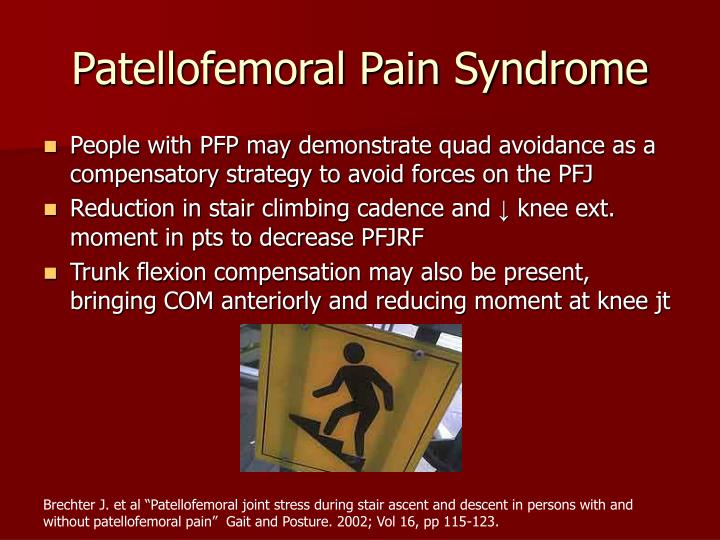
Exercise for stronger knees and hips Harvard Health. Physical therapists have emphasized the distinction between open-chain and closed-chain exercises. The chain referred to is a series of body parts, such as a hip, knee, ankle, and foot. The chain referred to is a series of body parts, such as a hip, knee, ankle, and foot., Closed kinetic chain exercises are performed with the foot placed on a surface (e.g. floor, step, pedal) and the entire limb is bearing a load and compressed. In open chain exercises (e.g. leg extensions) a relatively larger shear stress is applied to the joint..
(PDF) Open versus closed kinetic chain exercises for
(PDF) Open versus closed kinetic chain exercises for. GUIDELINES FOR ROTATOR CUFF REPAIR REHABILITATION The Shoulder Center of Kentucky uses a functional approach to therapeutic exercise. This approach is based on a kinetic chain model and motor control theories of function. It has evolved from the philosophies of W. Ben Kibler, M.D., Gary Gray, PT, and the conditioning methods of Vern Gambetta, M.A. It uses as much of the kinetic chain …, Open (OKC) vs Closed (CKC) Kinetic Chain Exercises This depends on whether the end of the limb is grounded/supported (closed) or unsupported (open). Squatting is an example of a closed-chain activity while knee extensions while sitting would constitute.
The results of this study indicate that semi-squat exercises (closed kinetic chain) are more effective than SLR exercise (open kinetic chain) in the treatment of patellar chondromalacia. More The results of this study indicate that semi-squat exercises (closed kinetic chain) are more effective than SLR exercise (open kinetic chain) in the treatment of patellar chondromalacia. More
C. Mikkelsen, S. Werner, and E. Eriksson, “Closed kinetic chain alone compared to combined open and closed kinetic chain exercises for quadriceps strengthening after anterior cruciate ligament reconstruction with respect to return to sports: A prospective matched follow-up study,” Knee Surgery, Sports Traumatology, Arthroscopy, vol. 8, no. 6, pp. 337–342, 2000. Open chain exercises isolate one muscle group. The knee is a hinged joint that is supported by the quadriceps and hamstrings. When it comes to exercise selection for the knee, you have the option of doing either open chain or closed chain exercises.
Open chain exercises are postulated to be advantageous in rehabilitation settings because they can be easily manipulated to selectively target specific muscles, or specific heads of certain muscles, more effectively than their closed chain counterparts, at different phases of contraction. Effectiveness of the open and closed kinetic chain exercises in the treatment of the patellofemoral pain syndrome Guilherme Lotierso Fehr1, Alberto Cliquet Junior2, Ênio Walker Azevedo Cacho3 and João Batista de Miranda4 ORIGINAL ARTICLE Keywords: Knees. Electromyography. Exercise. Functional recovery. ENGLISH VERSION ABSTRACT The aim of this study was to analyze the therapeutic …
C. Mikkelsen, S. Werner, and E. Eriksson, “Closed kinetic chain alone compared to combined open and closed kinetic chain exercises for quadriceps strengthening after anterior cruciate ligament reconstruction with respect to return to sports: A prospective matched follow-up study,” Knee Surgery, Sports Traumatology, Arthroscopy, vol. 8, no. 6, pp. 337–342, 2000. Closed chain exercises (i.e., the foot is in contact with a surface such as the ground or a metal plate on exercise equipment) are more functional (i.e., simulating "real" activities), and place less stress on the joint structures than open chain exercises.
Closed kinetic chain exercises or closed chain exercises (CKC) are physical exercises performed where the hand (for arm movement) or foot (for leg movement) is fixed in space and cannot move. The extremity remains in constant contact with the immobile surface, usually the … and closed chain terminal knee extension with theraband are the exercises of choice. In the OKC, there is less anterior shear stresses applied to the ACL in knee
Closed kinetic chain exercises are performed with the foot placed on a surface (e.g. floor, step, pedal) and the entire limb is bearing a load and compressed. In open chain exercises (e.g. leg extensions) a relatively larger shear stress is applied to the joint. Closed kinetic chain exercises or closed chain exercises (CKC) are physical exercises performed where the hand (for arm movement) or foot (for leg movement) is fixed in space and cannot move. The extremity remains in constant contact with the immobile surface, usually the …
Non-Operative Treatment - Chondromalacia Patella Rationale: The number of patellofemoral problems is increasing. No single cure exists for the treatment of this problem. This suggested exercise program is divided into three goal-oriented phases. Paying attention to the precautions and good education is paramount to success. Phase 1-Acute phase Goals: Education Decrease pain, swelling, palpable Isokinetic Closed Kinetic Chain Strength Testing and Exercising of the Knee Kenji Kawamura kibi International University, Takahashi, Japan kawamura@kiui.ac.jp Introduction: Closed kinetic chain(CKC) exercise has become popular for use after anterior cruciate ligament (ACL) reconstructive surgery because many clini- cians believe that CKC exercises are safer and more functional than …
Open chain exercises isolate one muscle group. The knee is a hinged joint that is supported by the quadriceps and hamstrings. When it comes to exercise selection for the knee, you have the option of doing either open chain or closed chain exercises. • If the patient is having difficulty with equal use of extremities or tolerance to closed chain exercises, then the AlterG Anti-Gravity Treadmill® is a useful tool
Figure 2.€ The hypothesis is that OKC and CKC exercises for the early rehabilitation of the ACL-reconstructed knee do not differ in their effects on graft healing, postoperative knee … GUIDELINES FOR ROTATOR CUFF REPAIR REHABILITATION The Shoulder Center of Kentucky uses a functional approach to therapeutic exercise. This approach is based on a kinetic chain model and motor control theories of function. It has evolved from the philosophies of W. Ben Kibler, M.D., Gary Gray, PT, and the conditioning methods of Vern Gambetta, M.A. It uses as much of the kinetic chain …
Non-Operative Treatment - Chondromalacia Patella Rationale: The number of patellofemoral problems is increasing. No single cure exists for the treatment of this problem. This suggested exercise program is divided into three goal-oriented phases. Paying attention to the precautions and good education is paramount to success. Phase 1-Acute phase Goals: Education Decrease pain, swelling, palpable Possibly the most intriguing of these principles is the use of the kinetic chain concept in exercise prescription following ACL reconstruction. The hip, knee, and ankle joints when taken together, comprise the lower extremity kinetic chain.
A Comparison of Closed Kinetic Chain and Isokinetic joint. Closed-chain exercises and hamstring stretching have shown to decrease compressive forces on the anterior aspect of the knee. This case report will look at using these exercises in the conservative management of MPS. Case Description: The patient is a 13-year-old female who sustained a direct blow to the anteriomedial aspect of her left knee. After a diagnosis of Chondromalacia Patella, she, Figure 2.€ The hypothesis is that OKC and CKC exercises for the early rehabilitation of the ACL-reconstructed knee do not differ in their effects on graft healing, postoperative knee ….
ANTERIOR CRUCIATE LIGAMENT RECONSTRUCTION Knee Clinic

the therapist’s responsibility to con. Open vs. Closed Chain Exercise for Tibiofemoral Joint Osteoarthritis Walter L. Jenkins, DHS, PT, ATC-L Associate Professor Department of Physical Therapy East Carolina University APTA Combined Sections Meeting New Orleans, LA Orthopaedic Section; Knee Education Group Symposium February 26, 2005 I. Introduction II. Articular Cartilage a. Mechanism of Injury b. Tibiofemoral Joint …, stabilizers of the knee and as a means of restoring stability to the joint, exercises in open kinetic chain (OKC) and closed kinetic chain (CKC) has been used in rehabilitation programs disorders. Conclusion: The benefits for patellofemoral implementing these protocols are not well documented; scientific evidences are insuffici ent to prove the real effectiveness of these exercises in.
Non-Operative Treatment Chondromalacia Patella. assigned to either a closed kinetic chain or a joint isolation exercise training group. An 8-inch An 8-inch (20.3 cm) retro step-up test was performed at baseline, 8 weeks, and I year., Closed kinetic chain exercises are performed with the foot placed on a surface (e.g. floor, step, pedal) and the entire limb is bearing a load and compressed. In open chain exercises (e.g. leg extensions) a relatively larger shear stress is applied to the joint..
Exercise for stronger knees and hips Harvard Health
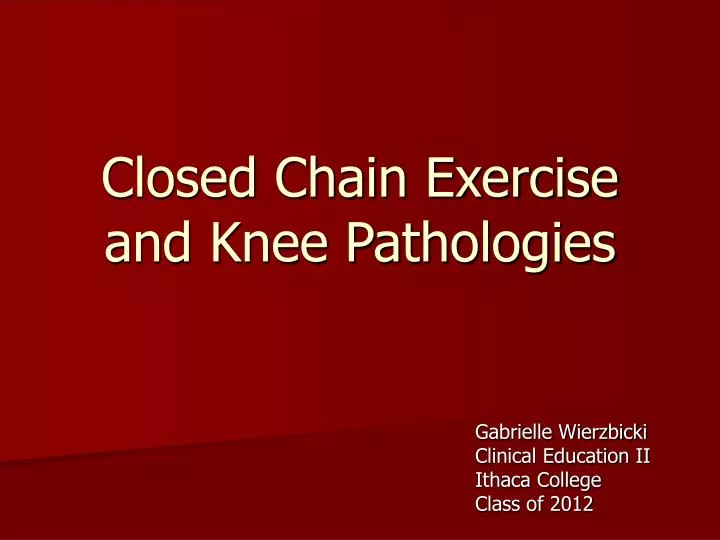
Percentage of Maximal Voluntary Isometric Contraction of. For example, closed chain terminal knee extension and leg presses are less stressful to the ACL than full range open chain flexion to extension exercises. Lastly, maintenance of full extension during the rehabilitation process is mandatory. knee isokinetic closed kinetic chain exercises (p .047). However, there was no statistical difference in VMO/VL ratio between subjects with and without PFPS during closed kinetic chain exercises (p .623). Maximum VMO/VL ratio was obtained at 60° knee flexion in closed kinetic chain exercise. Conclusion: In closed kinetic chain exercises, more selec-tive VMO activation can be obtained at 60.

In an effort to help clarify contradictory findings in the exercise science literature on this topic, researchers in the United Kingdom conducted a study designed to test the effect of two closed kinetic chain exercises and one open kinetic chain exercise on … Closed kinetic chain exercises or closed chain exercises (CKC) are physical exercises performed where the hand (for arm movement) or foot (for leg movement) is fixed in space and cannot move. The extremity remains in constant contact with the immobile surface, usually the …
Closed chain exercises (i.e., the foot is in contact with a surface such as the ground or a metal plate on exercise equipment) are more functional (i.e., simulating "real" activities), and place less stress on the joint structures than open chain exercises. Irish, SE, Millward, AJ, Wride, J, Haas, BM, and Shum, GLK. The effect of closed-kinetic chain exercises and open-kinetic chain exercise on the muscle …
Abstract. Subject: Conservative treatment of patellar chondromalacia has been the subject of several studies. One recommended treatment is a strengthening exercise of the quadriceps muscle, which may be performed in closed or open kinetic chains. Abstract. Subject: Conservative treatment of patellar chondromalacia has been the subject of several studies. One recommended treatment is a strengthening exercise of the quadriceps muscle, which may be performed in closed or open kinetic chains.
Non-Operative Treatment - Chondromalacia Patella Rationale: The number of patellofemoral problems is increasing. No single cure exists for the treatment of this problem. This suggested exercise program is divided into three goal-oriented phases. Paying attention to the precautions and good education is paramount to success. Phase 1-Acute phase Goals: Education Decrease pain, swelling, palpable Continue to progress with full extension exercises, and progress to closed kinetic chain exercise s (always exercising with full weight through the leg) . Flexion exercises: wall and heel slides.
stabilizers of the knee and as a means of restoring stability to the joint, exercises in open kinetic chain (OKC) and closed kinetic chain (CKC) has been used in rehabilitation programs disorders. Conclusion: The benefits for patellofemoral implementing these protocols are not well documented; scientific evidences are insuffici ent to prove the real effectiveness of these exercises in and closed chain terminal knee extension with theraband are the exercises of choice. In the OKC, there is less anterior shear stresses applied to the ACL in knee
Knowing that a closed-chain activity such as a leg press allows for co-contraction of the muscles of the knee (Escamilla et al, 1998 Escamilla RF, Fleisig GS, Zheng N, Barrentine SW, Wilk KE, Andrews JR 1998 Biomechanics of the knee during closed kinetic chain and open kinetic chain exercises. Abstract Purpose. For treatment of various knee disorders, muscles are trained in open or closed kinetic chain tasks. Coordination between the heads of the quadriceps muscle is important for stability and optimal joint loading for both the tibiofemoral and the patellofemoral joint.
stabilizers of the knee and as a means of restoring stability to the joint, exercises in open kinetic chain (OKC) and closed kinetic chain (CKC) has been used in rehabilitation programs disorders. Conclusion: The benefits for patellofemoral implementing these protocols are not well documented; scientific evidences are insuffici ent to prove the real effectiveness of these exercises in Figure 2.€ The hypothesis is that OKC and CKC exercises for the early rehabilitation of the ACL-reconstructed knee do not differ in their effects on graft healing, postoperative knee …
PRE’s Hip/Knee/Ankle exercises open chain all planes. Balance/Proprioception Kickboard push/pull with added diagonals two-legged progressing to one-legged, one-legged balance with eyes open/eyes closed, tubing exercises in upper PRE’s Hip/Knee/Ankle exercises open chain all planes. Balance/Proprioception Kickboard push/pull with added diagonals two-legged progressing to one-legged, one-legged balance with eyes open/eyes closed, tubing exercises in upper
• If the patient is having difficulty with equal use of extremities or tolerance to closed chain exercises, then the AlterG Anti-Gravity Treadmill® is a useful tool Closed chain exercises (i.e., the foot is in contact with a surface such as the ground or a metal plate on exercise equipment) are more functional (i.e., simulating "real" activities), and place less stress on the joint structures than open chain exercises.
PATELLOFEMORAL JOINT REHABILITATION COMPONENTS GREG BENNETT, P.T., DSc. Excel Physical Therapy Marymount University Anatomy of the patella: Patella is triangular, apex directed downwards Anterior surface gently convex Deep surface partially articulating and changes throughout the ROM of the knee. Joint surfaces are not congruent. Upper 3/4th articulates Functions: Patella … stabilizers of the knee and as a means of restoring stability to the joint, exercises in open kinetic chain (OKC) and closed kinetic chain (CKC) has been used in rehabilitation programs disorders. Conclusion: The benefits for patellofemoral implementing these protocols are not well documented; scientific evidences are insuffici ent to prove the real effectiveness of these exercises in
terminal knee extension (TKE); step ups; step backs; squats; other closed chain exercises-make sure knee flexion does not exceed 60° • Heel slides/ wall slides actively • Gait drills • Balance drills with brace • Hip and core strengthening • Stretching for patient specific muscle imbalances Cardiovascular Exercise • Upper body circuit training or UBE Progression Criteria Isokinetic Closed Kinetic Chain Strength Testing and Exercising of the Knee Kenji Kawamura kibi International University, Takahashi, Japan kawamura@kiui.ac.jp Introduction: Closed kinetic chain(CKC) exercise has become popular for use after anterior cruciate ligament (ACL) reconstructive surgery because many clini- cians believe that CKC exercises are safer and more functional than …
